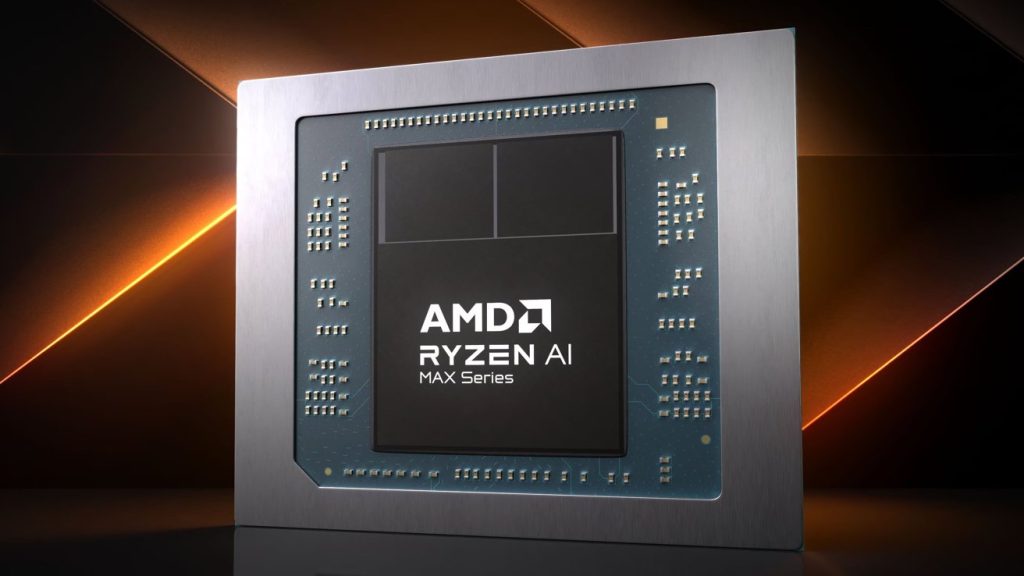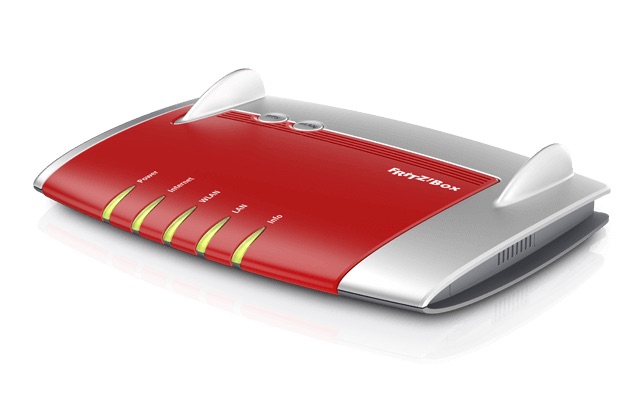Apple Silicon’s success helped AMD make Ryzen AI Max chips – AppleInsider

AAPL: 237.02 ( 5.68 )
Copyright © 2025 Quiller Media, Inc. All rights reserved.
AMD Ryzen AI Max – Image Credit: AMDAMD’s latest Ryzen AI Max chips probably wouldn’t have existed without Apple, an AMD executive has admitted, thanks to the popularity of Apple Silicon.
At CES, AMD introduced Ryzen AI Max chips, an upgraded version of its Ryzen AI architecture with up to 16 CPU cores and up to 40 AMD RDNA 3.5 graphics compute units, and a neural processing unit with up to 50 trillion operations per second.
The chips, offering tons of performance in various ways in one focused component, has considerable echoes to the way Apple Silicon works. During the launch, AMD VP Joe Macri hinted that Apple Silicon helped with getting the product made and out the door, reports Engadget.
An Apple Silicon thing”Many people in the PC industry said, well, if you want graphics,, it’s gotta be discrete graphics because otherwise people will think it’s bad graphics,” Macri offered.
He continued “What Apple showed was consumers don’t care what’s inside the box. They actually care about what the box looks like. They care about the screen, the keyboard, the mouse. They care about what it does.”
With Apple having a massive success on its hands with Apple Silicon, it allowed Macri to convince upper management to spend a “mind boggling” amount of resources to develop the Ryzen AI Max.
“I always knew, because we were building APUs, and I’d been pushing for this big APU forever, that I could build,” Macri enthused. “A system that was smaller, faster, and I could give much higher performance at the same power.”
Inspired, but not firstWhile Macri was complementary about Apple Silicon’s success and how it helped convince others that Ryzen AI Max chips were a real possibility, he stops short of giving full credit to Apple.
He insists that AMD was working towards this scenario well ahead of Apple. “We were building APUs while Apple was using discrete GPUs,” he crows, referring to chips that combined a CPU with Radeon graphics.
“They [Apple] were using our discrete GPUs. So I don’t credit Apple with coming up with the idea,” he continued.
Before implementing Apple Silicon, Apple did extensively use AMD Radeon GPUs as discrete graphics options in its MacBook Pro lines.
Apple may have had an interest in creating its own APU at the time AMD was working on the concept. In July 2012, former AMD chip architect John Bruno, who previously contributed to AMD’s Trinity APU was spotted on LinkedIn as having become a “System Architect at Apple.”
At one point, Apple apparently considered using the original AMD Fusion APU in the Apple TV in 2010, before eventually using its A4 processor. At CES, AMD introduced Ryzen AI Max chips, an upgraded version of its Ryzen AI architecture with up to 16 CPU cores and up to 40 AMD RDNA 3.5 graphics compute units, and a neural processing unit with up to 50 trillion operations per second.
The chips, offering tons of performance in various ways in one focused component, has considerable echoes to the way Apple Silicon works. During the launch, AMD VP Joe Macri hinted that Apple Silicon helped with getting the product made and out the door, reports Engadget.
“Many people in the PC industry said, well, if you want graphics,, it’s gotta be discrete graphics because otherwise people will think it’s bad graphics,” Macri offered.
He continued “What Apple showed was consumers don’t care what’s inside the box. They actually care about what the box looks like. They care about the screen, the keyboard, the mouse. They care about what it does.”
With Apple having a massive success on its hands with Apple Silicon, it allowed Macri to convince upper management to spend a “mind boggling” amount of resources to develop the Ryzen AI Max.
“I always knew, because we were building APUs, and I’d been pushing for this big APU forever, that I could build,” Macri enthused. “A system that was smaller, faster, and I could give much higher performance at the same power.”
While Macri was complementary about Apple Silicon’s success and how it helped convince others that Ryzen AI Max chips were a real possibility, he stops short of giving full credit to Apple.
He insists that AMD was working towards this scenario well ahead of Apple. “We were building APUs while Apple was using discrete GPUs,” he crows, referring to chips that combined a CPU with Radeon graphics.
“They [Apple] were using our discrete GPUs. So I don’t credit Apple with coming up with the idea,” he continued.
Before implementing Apple Silicon, Apple did extensively use AMD Radeon GPUs as discrete graphics options in its MacBook Pro lines.
Apple may have had an interest in creating its own APU at the time AMD was working on the concept. In July 2012, former AMD chip architect John Bruno, who previously contributed to AMD’s Trinity APU was spotted on LinkedIn as having become a “System Architect at Apple.”
At one point, Apple apparently considered using the original AMD Fusion APU in the Apple TV in 2010, before eventually using its A4 processor. Based in South Wales, Malcolm Owen has written about tech since 2012, and previously wrote for Electronista and MacNN. In his downtime, he pursues photography, has an interest in magic tricks, and is bothered by his c…Apple was using integrated graphics with Intel chips long before they moved to Apple Silicon. I even remember people on this board saying that Apple should only use discreet graphics because integrated graphics weren’t good blah blah blah. I’m glad that Apple could prove that integrated graphics can have real benefits.
Apple was using integrated graphics with Intel chips long before they moved to Apple Silicon. I even remember people on this board saying that Apple should only use discreet graphics because integrated graphics weren’t good blah blah blah. I’m glad that Apple could prove that integrated graphics can have real benefits.It’s definitely true that AMD has been focused on ‘APUs’ for a long time. It’s the reason they bought ATI. But it’s also true (imho) that buying ATI was a huge waste of $5 billion that they should have spent updating the athlon to better compete with Core 2 duo and they should have built a new fab. That decision nearly bankrupted the company. The idea for the APU wasn’t wrong, it was just way too premature and diverted resources from more important priorities. Kind of like apple introducing Newton way too early.
It’s definitely true that AMD has been focused on ‘APUs’ for a long time. It’s the reason they bought ATI. But it’s also true (imho) that buying ATI was a huge waste of $5 billion that they should have spent updating the athlon to better compete with Core 2 duo and they should have built a new fab. That decision nearly bankrupted the company. The idea for the APU wasn’t wrong, it was just way too premature and diverted resources from more important priorities. Kind of like apple introducing Newton way too early.There isn’t anything to crow about here, either from Apple or AMD. Transistor budgets roughly double every 2 years or so. Having more and more dedicated function units added to the “CPU” has been a process that is ongoing for the past 40 years. NPUs are just the latest thing, with a lot of hype. In another time, they’d just be called specialized SIMD units.And, AMD has a lot of experience putting higher performance GPUs into an SoC. They provided the SoCs for both PS5 and XBox X-series, or in their language, APUs. There’s a lot of technical heritage there. Management likely needs to be convinced to make a high performance x86 APU for PC laptops, though. I’d bet AMD managers are thinking it is crazy to spend a lot of R&D on a high performance APU or SoC in the laptop market. AMD seems to be failing or having a down turn in this market. It’s a hyper mature market where the vast majority of laptops are neutered $600 devices that doesn’t require much of a GPU at all. They are competing for a pretty small slice with very little margins.AMD is way way behind in the AI accelerator market. These are like $5000 modules that has been in hyper demand for the past couple of years, and is slated to grow. These are really high margin products. AMD not trying to cut into that market seems like a troublesome path. Those margins will pay for everything else.
There isn’t anything to crow about here, either from Apple or AMD. Transistor budgets roughly double every 2 years or so. Having more and more dedicated function units added to the “CPU” has been a process that is ongoing for the past 40 years. NPUs are just the latest thing, with a lot of hype. In another time, they’d just be called specialized SIMD units.And, AMD has a lot of experience putting higher performance GPUs into an SoC. They provided the SoCs for both PS5 and XBox X-series, or in their language, APUs. There’s a lot of technical heritage there. Management likely needs to be convinced to make a high performance x86 APU for PC laptops, though. I’d bet AMD managers are thinking it is crazy to spend a lot of R&D on a high performance APU or SoC in the laptop market. AMD seems to be failing or having a down turn in this market. It’s a hyper mature market where the vast majority of laptops are neutered $600 devices that doesn’t require much of a GPU at all. They are competing for a pretty small slice with very little margins.AMD is way way behind in the AI accelerator market. These are like $5000 modules that has been in hyper demand for the past couple of years, and is slated to grow. These are really high margin products. AMD not trying to cut into that market seems like a troublesome path. Those margins will pay for everything else.
tht said:
There isn’t anything to crow about here, either from Apple or AMD. Transistor budgets roughly double every 2 years or so. Having more and more dedicated function units added to the “CPU” has been a process that is ongoing for the past 40 years. NPUs are just the latest thing, with a lot of hype. In another time, they’d just be called specialized SIMD units.And, AMD has a lot of experience putting higher performance GPUs into an SoC. They provided the SoCs for both PS5 and XBox X-series, or in their language, APUs. There’s a lot of technical heritage there. Management likely needs to be convinced to make a high performance x86 APU for PC laptops, though. I’d bet AMD managers are thinking it is crazy to spend a lot of R&D on a high performance APU or SoC in the laptop market. AMD seems to be failing or having a down turn in this market. It’s a hyper mature market where the vast majority of laptops are neutered $600 devices that doesn’t require much of a GPU at all. They are competing for a pretty small slice with very little margins.AMD is way way behind in the AI accelerator market. These are like $5000 modules that has been in hyper demand for the past couple of years, and is slated to grow. These are really high margin products. AMD not trying to cut into that market seems like a troublesome path. Those margins will pay for everything else.
Although AMD is well behind Intel in the laptop market, they are now the top choice in the desktop chip market for new buyers. The only reason why AMD still is far behind (although their market share is growing) is because Intel will put the weakest chips inside the cheapest devices, and people will buy because they don’t do any research.
Although AMD is well behind Intel in the laptop market, they are now the top choice in the desktop chip market for new buyers. The only reason why AMD still is far behind (although their market share is growing) is because Intel will put the weakest chips inside the cheapest devices, and people will buy because they don’t do any research.LOL. “Apple silicon is super rad and popular, so let’s say that similar thing we did was ahead of it’s time… because apple used discrete CPUs before snd we sold them to apple. Yeah. Cool. Say that. People will believe it and like us more.”-recent AMD board meeting.
LOL. “Apple silicon is super rad and popular, so let’s say that similar thing we did was ahead of it’s time… because apple used discrete CPUs before snd we sold them to apple. Yeah. Cool. Say that. People will believe it and like us more.”-recent AMD board meeting. Amazon-owned Woot has launched a flash deal on a closeout 16-inch MacBook Pro that’s equipped with an impressive 8TB of storage.Apple is holding its annual shareholder meeting on February 25 at 11 a.m. Eastern Time, which is when participants will be able to vote and ask questions.During an interview with Joe Rogan about Meta’s abandonment of fact-checking and changing rules to allow hate speech, Meta’s CEO targeted Apple for lacking innovation since the iPhone.Apple’s latest Shot on iPhone film marks the Chinese New Year, with “I Made a Mixtape for You” showing an idyllic form of love from the 1990s.Synchrony Pay Later can soon be used to complete purchases in installments via Apple Pay.The next Apple TV is on the way, long overdue, and likely to bring with it multiple updates. Here’s what the rumor mill believes is on the way for Apple’s set-top box.Apple has launched a website and downloadable wallpaper for Apple Miami Worldcenter, a new store due to open on January 24.Analyst Ming-Chi Kuo claims that previous reports of an iPhone 17 Slim being 6mm are underestimating its thinness, at least for part of the device.Satechi’s SM3 Slim Mechanical Backlit Bluetooth keyboard is its first full-size version, offering many of the key features of the smaller predecessor, the SM1.Prolific computer storage maker LaCie has released its latest portable drive during CES 2025, debuting the Rugged SSD Pro5 with support for Thunderbolt 5.In a bid to reinvigorate PC sales, Dell should’ve put a lot of thought into how it rebrands its PCs. Instead, it ripped off the iPhone’s Pro and Pro Max naming conventions.
Source: https://appleinsider.com/articles/25/01/09/apple-silicons-success-helped-amd-make-ryzen-ai-max-chips


